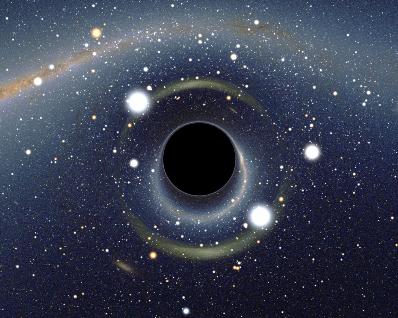Black hole discovered to be 3 times more massive than previously thought
 Washington, June 9 : Astronomers have used new computer modeling techniques to discover that the black hole at the heart of M87, one the largest nearby giant galaxies, is two to three times more massive than previously thought.
Washington, June 9 : Astronomers have used new computer modeling techniques to discover that the black hole at the heart of M87, one the largest nearby giant galaxies, is two to three times more massive than previously thought.
The astronomers were Karl Gebhardt from the University of Texas at Austin and Jens Thomas from the Max Planck Institute for Extraterrestrial Physics in Germany.
Weighing in at 6.4 billion times the Sun's mass, the black hole at the center of M87 is the most massive black hole yet measured with a robust technique, and suggests that the accepted black hole masses in nearby large galaxies may be off by similar amounts.
This has consequences for theories of how galaxies form and grow, and might even solve a long-standing astronomical paradox.
To try to understand how galaxies form and grow, astronomers need to start with basic census information about today's galaxies.
What are they made of? How big are they? How much do they weigh? Astronomers measure this last category, galaxy mass, by clocking the speed of stars orbiting within the galaxy.
According to Thomas, studies of the total mass are important, but "the crucial point is to determine whether the mass is in the black hole, the stars, or the dark halo. You have to run a sophisticated model to be able to discover which is which. The more components you have, the more complicated the model is."
To model M87, Gebhardt and Thomas used one of the world's most powerful supercomputers, the Lonestar system at The University of Texas at Austin's Texas Advanced Computing Center.
Lonestar is a Dell Linux cluster with 5,840 processing cores and can perform 62 trillion floating-point operations per second.
Gebhardt and Thomas' model of M87 was more complicated than previous models of the galaxy, because in addition to modeling its stars and black hole, it takes into account the galaxy's "dark halo," a spherical region surrounding a galaxy that extends beyond its main visible structure, containing the galaxy's mysterious "dark matter."
The Lonestar result was a mass for M87's black hole several times what previous models have found.
"We did not expect it at all," Gebhardt said. He and Thomas simply wanted to test their model on "the most important galaxy out there," he said. (ANI)